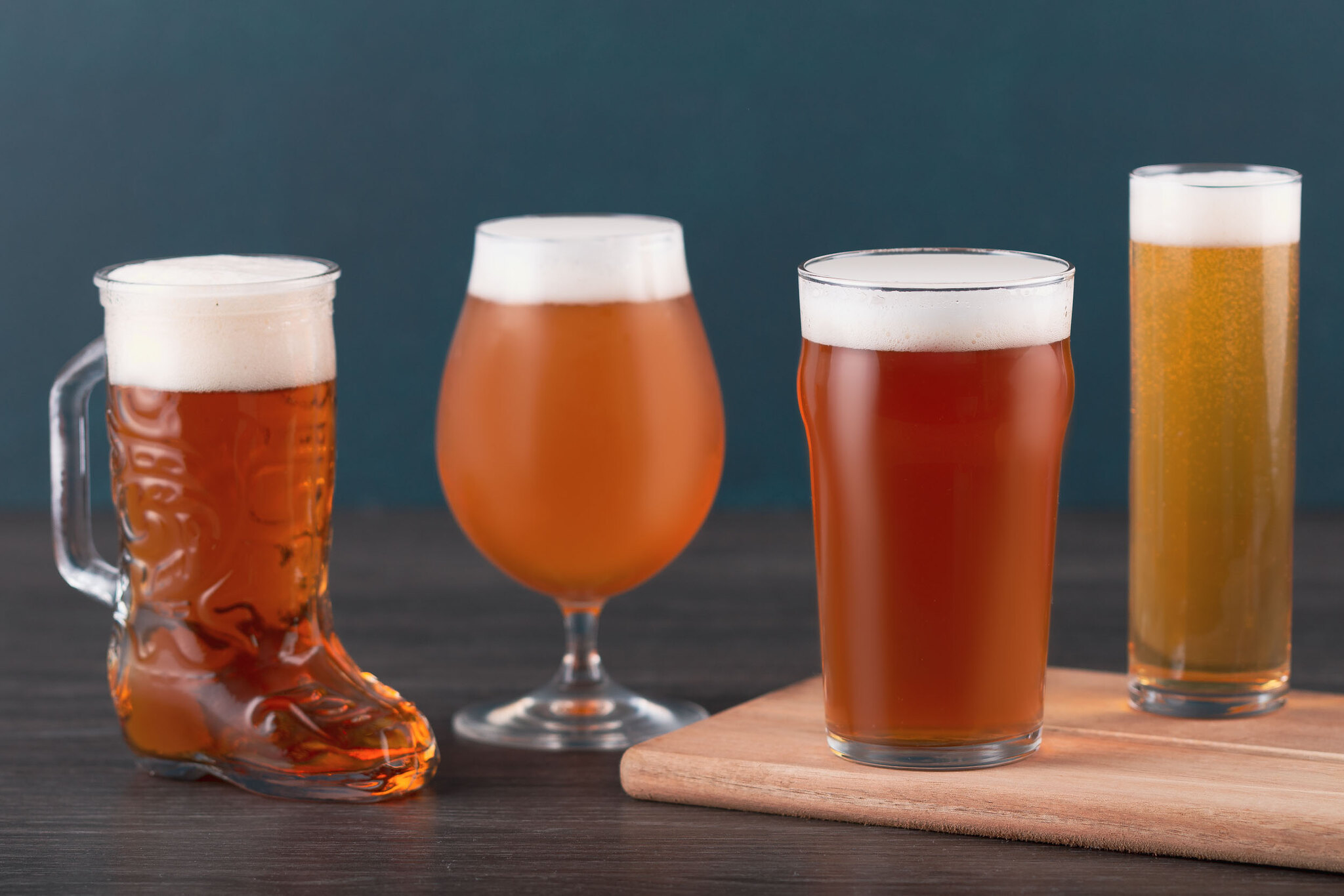
Find out what it takes for a glass to be a beer clean glass.
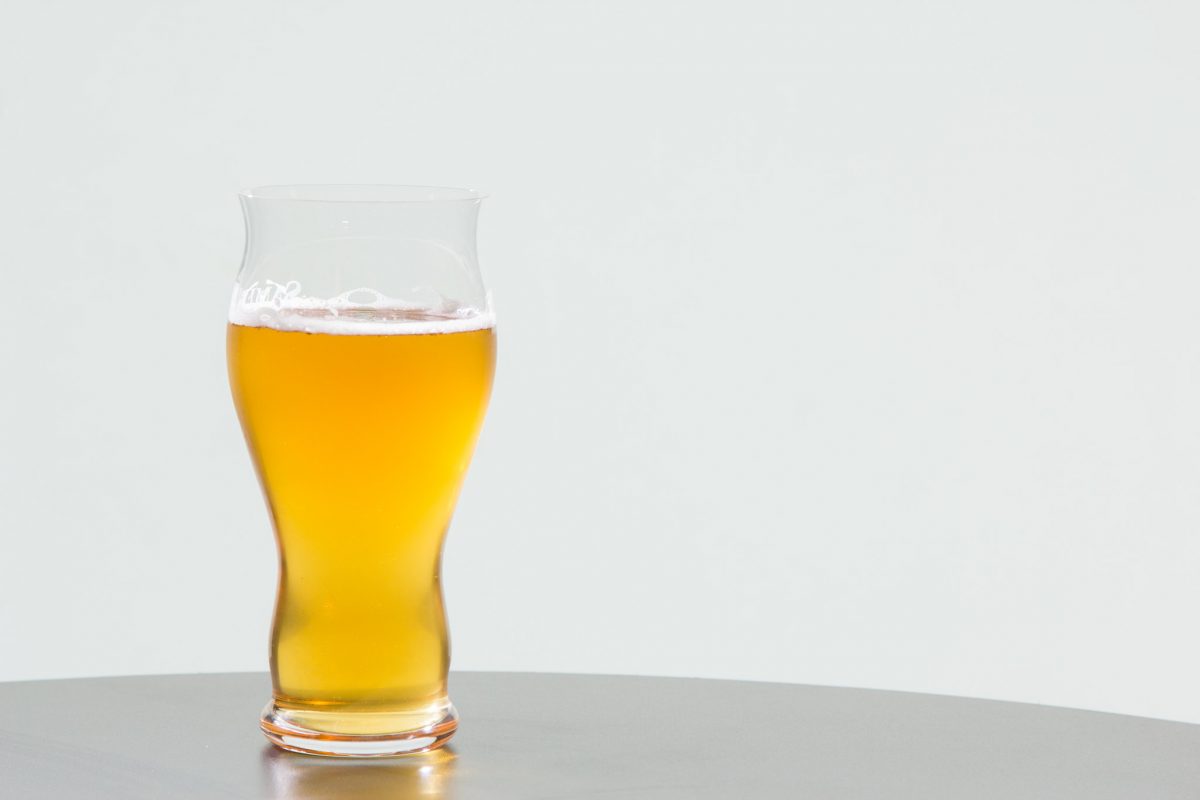
There’s a science to the presentation of the perfect beer. But you already know that, don’t you? You know that your pint of brewed deliciousness should be poured while the glass is held at 45º and that once the pour has reached the halfway point, you should tilt the glass upright, then close the faucet quickly to avoid overflow. A one-inch collar of foam (the head) should top off the beer visually while enhancing aromas and protecting the beer's carbonation.
But did you know that this delicate process may not go as planned if you don’t pay attention to one key detail: the glassware? More specifically, the cleanliness of those beer glasses. Because when it comes to the perfect beer, clean enough isn’t good enough. What you really need is beer clean.
What is a beer clean glass?
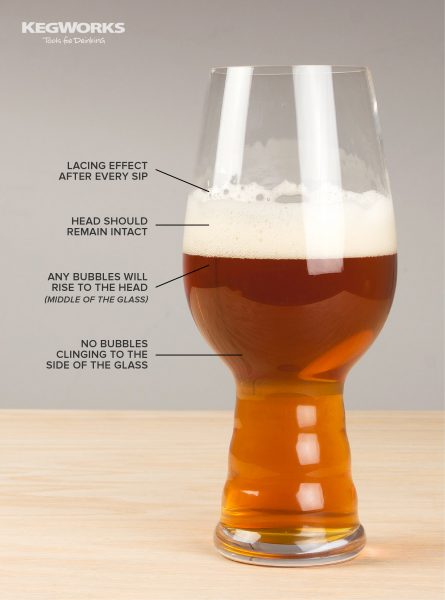
Beer clean is an industry term describing a glass free of any impurities that would give CO2 a place to cling to, ensuring the beer’s best look and taste. The Brewer’s Association Draught Beer Quality Manual (DBQM) defines a beer clean glass as: "Forms a proper foam head, allows lacing during consumption, and never shows patches of bubbles stuck to the side of the glass in the liquid beer."
That makes sense, right?
Why is beer clean glassware so important?
The process that goes into making beer is long and painstaking. From harvesting the grain to malting, to the act of brewing itself, all of these steps come together to create one product. At each step of the way, the parties involved are focused on ensuring the highest standards of quality and sanitation. So why would you forget all that hard work when it’s time to reap the reward and put that sweet, sweet beer to your lips? Insisting on the cleanest possible glassware is the last hurdle you must clear to guarantee that the beer you enjoy is the best it can be. A dirty glass can compromise a carefully crafted beer’s taste, carbonation, and look; frankly, no one should be OK with that.
How does a dirty glass affect your beer?
As noted above, if a glass is anything less than beer clean, it harbors minor (or major) impurities that give CO2 a place to cling. This rogue CO2 is meant to be rapidly released upon the pour, shooting upwards, creating a cascading effervescence integral to the overall aesthetic experience of enjoying your beer. When CO2 stays in the glass, it may lessen the foamy head, wreak havoc on the mouthfeel and flavors, and generally leave you with a subpar drinking experience.
What are the signs of non-beer clean glassware?
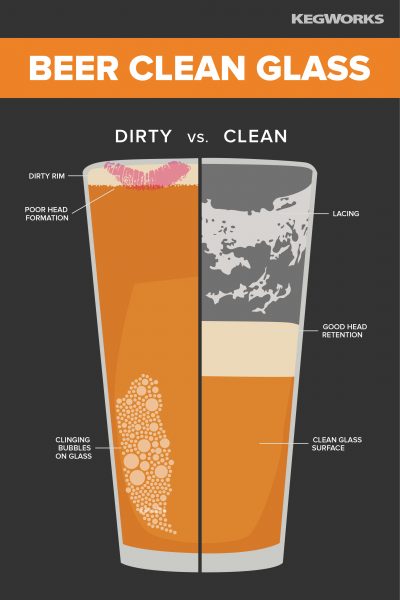
Visible residues, like fingerprints or lipstick, are not the only form dirt and grime can take on glassware. Fat or grease-based residues like milk or dish soap can all leave a clear film on the glass. This film causes the speedy release of carbonation, causing your beer to go flat and changing the taste. Odors absorbed from stale air, smoke, or drying towels, may also give the beer an off-taste.
Find out if your glass is really beer clean by looking for carbonation bubbles inside the glass. On a beer clean glass, there will be no irregularities or impurities for bubbles to form on. If you see bubbles clinging to the sides of a glass, it’s a surefire sign that the glass has some residual impurities from soap, food, or something else.
Beer Clean Glass Tests
You can also beer clean “test” your glassware. The three most common techniques are the sheeting test, the salt test, and the lacing test.
Sheeting Test

The sheeting test involves dipping the glass in water. If the glass is clean, the water will evenly coat it. If there is an invisible film, the water will break up into droplets on the inside surface.
Salt Test
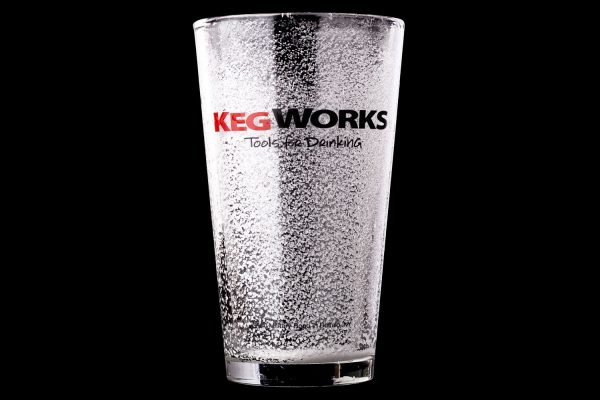
For the salt test, sprinkle salt on the inside of a wet glass - it will not adhere to the parts that still contain a greasy film.
Lacing Test
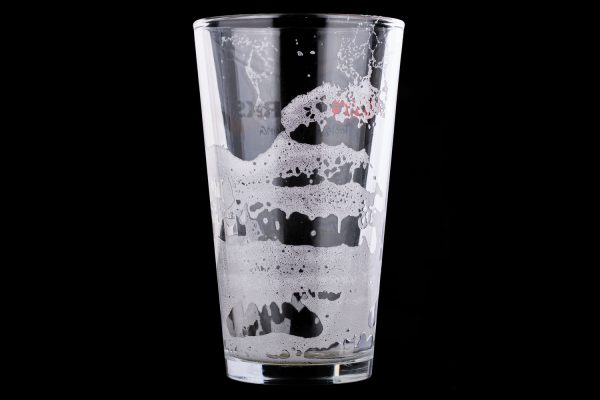
The lacing test happens after a glass has been filled with beer (so we recommend not wasting your finest pours with this particular test). As the beer is consumed, the foam should adhere to the inside of the glass in uniform, parallel rings forming a lace pattern. If there is a film, there may be a random pattern from the foam or no pattern at all.
How to properly clean beer glassware
The obvious key to having beer clean glassware is properly washing your glasses with the appropriate beer glass cleaner and sanitizers. According to the Draught Beer Quality Manual, there are two acceptable, effective ways to clean your glassware for guaranteed beer clean results: manually washing in a three-tub sink or using a dedicated automatic glass washer.
For manual cleaning, it is important to clean sinks and the work area before cleaning the glassware and pour any remaining liquid from the dirty glass into a drain. Avoid emptying the glass into the cleaning water to prevent diluting the beer glass cleaner.
Clean the glass in the first tub using hot water and a suitable odorless, non-fat detergent. Use cleaning brushes to scrub the glass and remove any film, lipstick, or other residue. Rotate the glass on the brushes to scrub all the surfaces, both inside and outside. Pay special attention to cleaning the inside bottom of the glass.
Rinse the glass from heel to toe in the second tub with cold water by dunking the glass in the water with the bottom end first. Inserting the glass with the top of it first could create air bubbles inside the glass, preventing it from being completely rinsed. The water for rinsing should be refreshed continuously through an overflow tube and not be stagnant. Giving the glass a double dunk in the rinse is recommended if you have enough time.
Finally, sanitize the rinsed glass in the third tub filled with water and an appropriate sanitizer. Make sure to follow the instructions provided by the sanitizer manufacturer regarding the suitable water temperature for sanitizing. Use the heel-to-toe method when sanitizing the beer glassware.
Check out the video from our KegWorks Instagram page for a visual reference.
If using a glass washing machine, it’s imperative that you dedicate this machine to bar and beer glassware only. Wash glasses at a hot temperature (between 130º and 140º) and use the correct detergent, sanitizing, and/or rinsing agents. Check concentrations daily and regularly service the machine to keep its performance where.
Another tip we recommend to help keep your glassware beer clean is to avoid filling any glasses you regularly drink beer from with other liquids, such as milk, juice, or soda pop. This prevents any residue from those beverages from contaminating your beer.
How to dry beer clean glassware
Air drying is best, as drying towels can leave behind odors or lint. If you use towels, make sure to use lint-free bar towels and let them thoroughly dry between uses to prevent mildew growth.
Store your beer clean glassware in a stainless-steel wire basket for maximum air circulation. Do not dry glassware on a towel, rubber drain pad, or any other smooth surface, as they can transfer odors to the glass and slow the drying process. Glassware should be stored in an area free of odors, smoke, grease, or dust.
And, despite what your favorite sports bar might do, glassware should not be kept in a freezer. Beer glasses can be chilled to 36-40 degrees, but a frozen glass can create foaming. The ice crystals cause a rapid release of CO2. Beer served at near-frozen temperatures can also numb taste buds, which makes for a bland-tasting experience.
What is a nucleated beer glass?
A nucleated beer glass has etchings on the bottom of the inside of the glass. That creates points of nucleation, which aids in releasing dissolved CO2 in the beer in the form of bubbles. This improves head retention and releases more aromas and flavors in your beer. The only drawback to nucleated glasses is that it makes your beer go flat faster, which might not be good if you tend to nurse your beer or savor a higher-ABV beer.
And that’s basically everything you need to know about beer clean glassware. Without it, your carefully crafted beer’s carbonation, aroma, and taste will all be compromised. Being able to identify dirty glassware and knowing the proper way to make glassware beer clean will allow you to drink beer the way a brewery intends you to.
Tags:
Kegworks
Kegworks has been transforming hospitality spaces since 1998 with expertly crafted architectural metalwork and professional draft beer equipment, helping designers, architects, and bar professionals bring their visions to life.


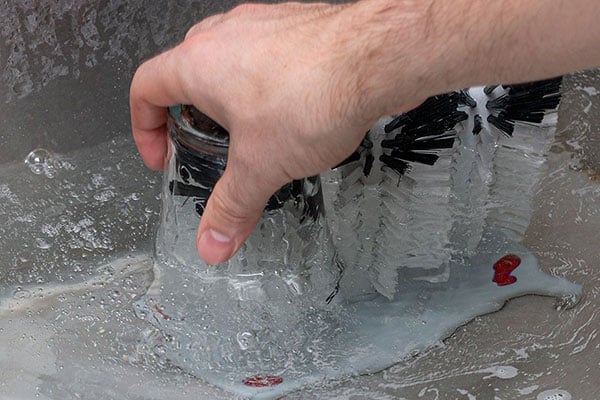
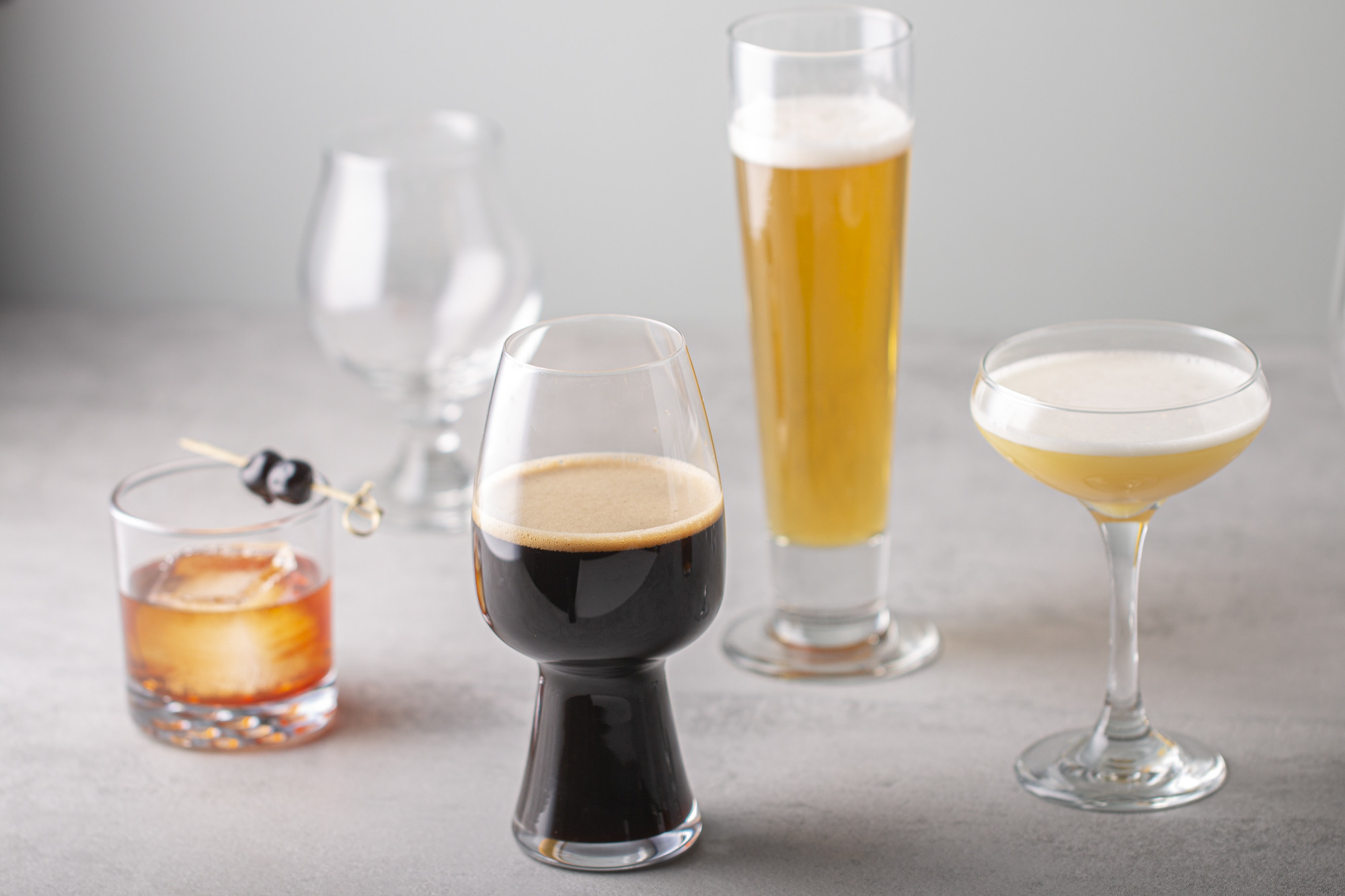
Leave a Comment